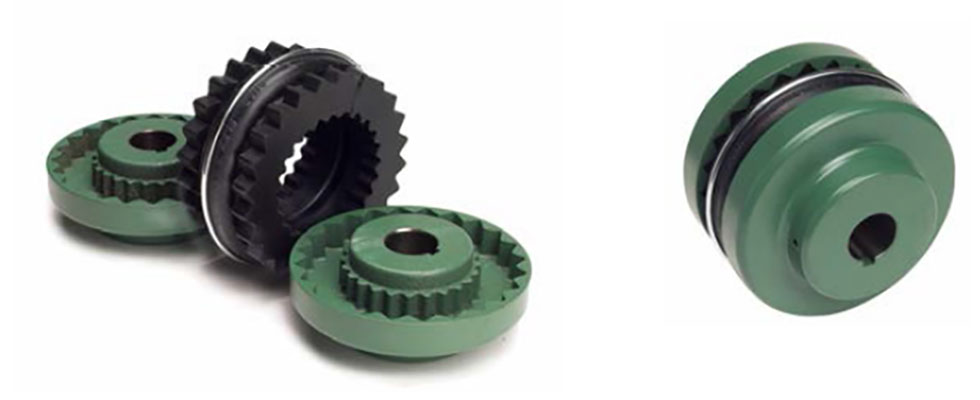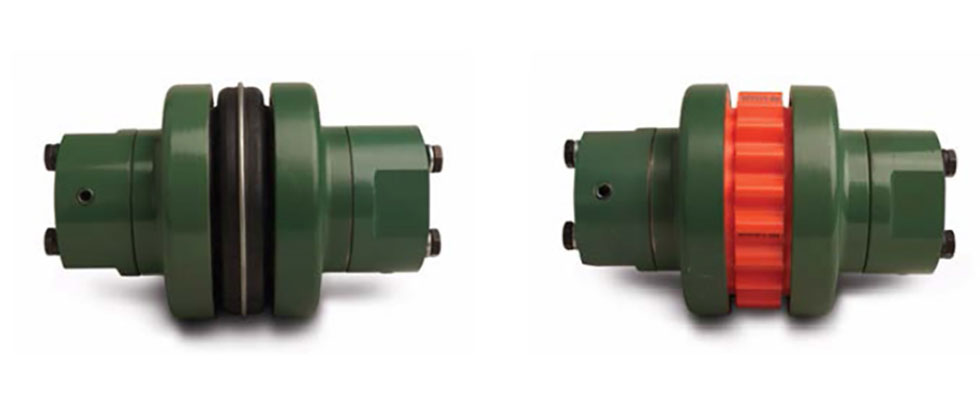
What is a flexible coupling?
There are many types of flexible couplings available on the market. Each has its own features and benefits, but all are required to perform a few primary functions: connect two shafts, transmit rotary power and compensate for some shaft misalignment.

Images 1 and 2 provide an example of close-coupled sleeve and spacer sleeve flexible couplings. In these images, the metallic sleeve elements attach to the shafts, and there is a mating elastomeric element in shear.
Often, it is simple to compare couplings based on torque and misalignment. This will lead to several available options for any particular application. It is also important to analyze and compare the secondary features inherent to specific coupling styles.
Some of these secondary features may include cushioning of shock loads, vibration damping, maintenance accessibility, electrical insulation or conductivity, limited end float capabilities, fail-safe properties, speed, unbalance and more. Depending on the application, these secondary features may be important in the flexible coupling selection process.

The Hydraulic Institute’s guidebook on flexible couplings basics discusses these factors and creates a basis for comparison of the various types of flexible couplings. Please refer to this reference for more information on popular styles of flexible couplings and their application considerations at www.pumps.org/standards.

